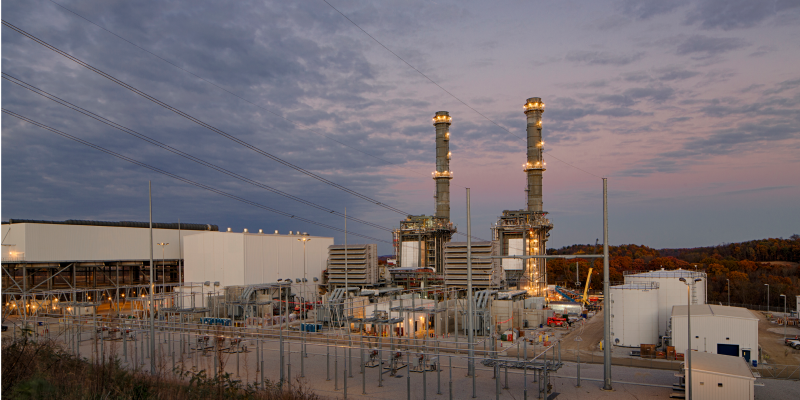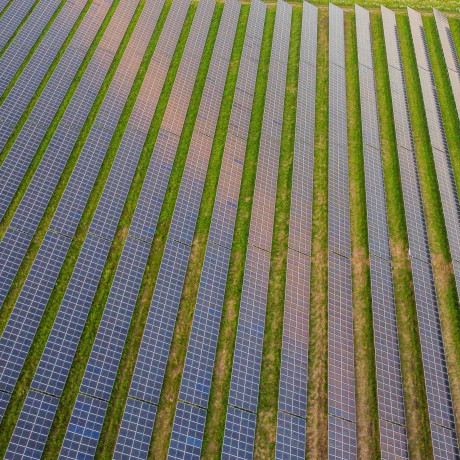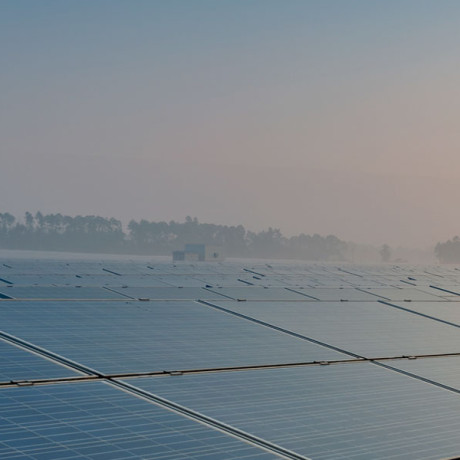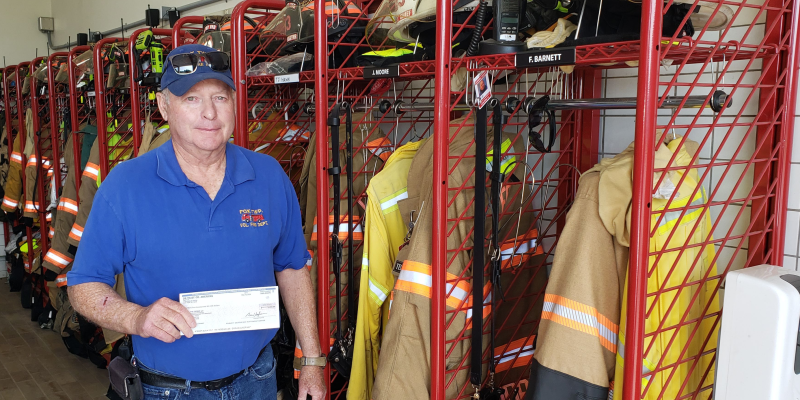
The Challenge
The year 2024 has brought substantial changes to energy forecasts. The anticipated increase in energy demand is primarily driven by notable expansions in data center development, ongoing electrification of the U.S. economy, advancements in Artificial Intelligence (AI), and demographic shifts. As energy demand rises, achieving this growth with new energy supplies that align with our commitment to a sustainable energy future remains a priority for Advanced Power.
Just a short decade ago, electric load growth in the U.S. was considered relatively flat, growing at a rate of approximately 0.5% annually. The opportunity for independent power producers had been largely focused on replacing retiring coal plants, notorious for heavy emissions, with lower-emitting facilities. Advanced Power’s approach to energy development has consistently reflected our belief that a mix of low-carbon and renewable energy resources can balance the need for reliable power while driving toward a sustainable and reliable energy future.
In 2024, data centers consumed about 4% of U.S. electricity supplies. According to a study by the Electric Power Research Institute (EPRI) released this year, that number will grow annually and range between 4.6% to 9.1% of U.S. electricity generation by 2030.
Projected overall load growth beyond 2030 is estimated to range between 3.7% and 15% per year. Even at moderate load growth projections equating to just 7% compounded annually, US electricity demand would double in 10 short years. That is an additional 491.3 gigawatts (GW) of needed new generation capacity. These projections represent a significant and urgent challenge for all who depend on reliable energy – which is all of us.
Solutions
What does this mean for Advanced Power’s approach to ESG? Our development strategy has traditionally focused on the importance of reliable energy for society. Social responsibility has often been considered in terms of volunteer hours and donations. While these remain important, it is also necessary to take into account the serious consequences of insufficient electricity supplies on society and communities.
Some less-than-ideal suggestions proposed for meeting surging energy demand include delaying the shutdown of coal plants currently slated for retirement. Displacing these facilities with highly efficient, combined-cycle natural gas turbine (CCGT) facilities has been the greatest driver of lower emissions from the energy sector over the past decade.
The displacement of coal plants with high-efficiency CCGT facilities actually shifted the transportation sector beyond the energy sector as the greatest producer of CO2 emissions in the US. Others propose a resurgence of nuclear power, which, despite its zero-carbon emissions, poses other major challenges, such as siting and disposal of radioactive waste that remains hazardous for thousands of years.
Advancing Sustainable Energy
At Advanced Power, we remain pragmatic in our belief that until innovators deliver dispatchable energy sources with fewer environmental impacts, the best energy options to ensure reliable electricity with the fewest emissions remain:
- Greater amounts of renewables;
- Energy storage and modern peaking units; and
- High-efficiency baseload electricity supplies produced through CCGT facilities and clean-burning, domestically available natural gas.
As you review this ESG information, you will continue to see our belief that a mix of low-carbon and renewable energy resources is the best way to balance the need for reliable power while driving toward the sustainable energy future to which we remain committed.

Thomas Spang
Chief Executive Officer
This ESG section offers a comprehensive overview of Advanced Power’s environmental, social, and governance (ESG) initiatives. We ensure accuracy through ongoing reviews by members of our ESG committee and internal subject matter experts. If you have feedback or suggestions about this section, please contact us.

The displacement of high-emitting electric-generating facilities with renewable, no-carbon, and low-carbon ones is central to Advanced Power’s commitment to environmental responsibility. Our project portfolio blends modern, efficient technology with domestically sourced renewable and low-carbon energy solutions. The most significant driver of reduced energy sector emissions since 2000 and still today, has been the displacement of coal as a primary electric-generating fuel. Our portfolio of projects completed and in development has supported this trend.
Advanced Power’s strategic pipeline of projects includes a mix of renewable, no-carbon, and low-carbon power sources to meet forecast dramatic growth in energy demand dependably, safely, and efficiently. While renewables are the fastest-growing power source in the U.S., the technology to address their intermittency is still evolving. Until innovators deliver an “always on” technology with fewer environmental impacts, we believe renewables, supported by cleaner-burning and domestically available natural gas, will best keep U.S. electricity supplies stable and reliable.

Minimizing environmental impacts while ensuring energy reliability are central to Advanced Power’s development strategy. We develop projects in regions with the greatest gap between electricity needs and supplies. Our strategic pipeline of projects in Texas, Kansas, Arizona, New Mexico, and Indiana includes a mix of renewable and low-carbon power sources, including battery energy storage systems (BESS) and modern natural gas peakers, to meet forecast growth dependably, safely, and efficiently.
Projected Energy Demand and Environmental Impact
The U.S. need for electricity is expected to increase dramatically over the coming decades, reaching approximately 5.2 terawatt hours by 2050, representing an increase of about 27% compared to 2021. Some proposed solutions to meeting growing energy demand now include:
- Increasing nuclear energy, which is zero-carbon but faces siting and radioactive waste disposal challenges.
- Postponing the closure of aging, high-emission coal plants scheduled for retirement.
The largest decrease in power sector emissions comes from replacing old coal plants with new natural gas facilities. In 2023, carbon dioxide emissions in the energy sector dropped even as electric demand rose, largely because the amount of coal-fired generation decreased. These impacts show that Advanced Power's goal of replacing high-emission energy sources with low-carbon and no-carbon ones is still valid and vital.
We also know newer and cleaner energy solutions lie around the corner, and we welcome the technology and infrastructure improvements that align with advancing a sustainable, reliable energy future.
Feasibility Planning and Site Evaluation
Advanced Power's feasibility and site evaluation process involves selecting sites based on their accessibility to interconnection infrastructure as well as alignment with our company’s Core Values.
Our process for evaluating and selecting energy project sites, including Solar, CCGT, Simple Cycle Peaker, or BESS facilities, includes several considerations: energy demand, distance from transmission infrastructure, existing land use, wetlands, and floodplains.
Each state and energy region also has its own goals and priorities, as do the various load-serving entities within their footprint, and we engage early and throughout the feasibility process to ensure mutual alignment.
Regulatory Compliance and Environmental Stewardship
We frequently collaborate with landowners and various state and federal agencies during the feasibility process to conduct additional studies, secure all essential permits, and strategically design and refine the project for successful completion.
The study, design, and permitting processes can take several years. They focus on environmental health and the compatibility of projects with existing land use and infrastructure, including stormwater management, native vegetation management, assessments of vulnerable species, viewshed impact studies, and cultural and historical reconnaissance.
These measures protect vulnerable species and their habitats, contributing to the long-term health of our ecosystems.
Strong, Local Relationships
Advanced Power is a company founded on strong relationships. We take pride in our honest, thorough, and community-focused development processes, striving to ensure that our projects provide value to communities and to those who become our partners and investors. We adopt a “community knows best” approach to engaging with local residents during site identification and development activities, and this approach extends through construction and operations.
We value the insights of economic development organizations, environmental advocates, chambers of commerce, local government, and other state agencies. We recognize that these entities best understand a community's uniqueness. We establish positive relationships with local stakeholders to ensure that each project reflects the character of its host community.

Solar power is the fastest-growing renewable energy source in the United States. Our portfolio of renewable energy projects includes utility-scale solar installations in regions experiencing growing energy demand and where sunshine is abundant.
Solar energy contributes to the electric grid's reliability, especially during periods of highest demand. For example, the sunniest days in Texas and the Desert Southwest are often the hottest, when cooling systems are working overtime to ensure safety and comfort, leading to greater demand for electricity. During the 2024 Texas heat waves, solar power was essential to maintaining electricity supplies in areas where the grid experienced significant strain.
Utility-scale solar facilities are cost-efficient to operate and require minimal maintenance, helping to stabilize or lower regional energy costs. Moreover, these facilities do not require a water supply for operation, which is beneficial for arid regions with limited water resources. Solar power generation also produces zero direct emissions, enhances air quality by displacing electricity from polluting sources, and promotes U.S. energy independence.
Our Solar Development Portfolio
Advanced Power aims to reduce carbon emissions and promote a healthier environment through sustainable energy practices. We have 3 GWac of solar energy projects in development in Texas, Kansas, and the Desert Southwest, enough to power over 200,000 homes. Our solar projects often include battery energy storage systems (BESS) to optimize the use of project sites and interconnection points. Through these initiatives, Advanced Power solar projects contribute to a cleaner, more sustainable energy future.
Addressing Peak Demand
A challenge for today’s power system managers is maintaining reliability during periods of peak demand. Grid reliability depends on the consistent alignment between power generated and the power used by customers. Advanced Power’s project pipeline includes BESS and modern natural gas peaking facilities to enhance grid reliability during times of high energy demand or when renewable electricity supplies may fluctuate.

BESS projects are at the top of the U.S. energy project development queue. Advanced Power is currently developing standalone and co-located lithium-ion BESS projects, totaling roughly 9+ GWh in development.
BESS aids in smoothing electric demand fluctuations, reducing the need for additional coal-based power, enhancing grid stability, and, in turn, supporting the integration of renewable energy sources. Advanced Power’s standalone BESS and co-located BESS facilities are designed to provide arbitrage services, meaning batteries are charged when demand is low and then dispatched by grid operators when needed.

In Advanced Power’s active development portfolio are combined Cycle Natural Gas Turbine (CCGT) facilities and Simple Cycle Peakers. Our peakers are highly flexible and operate more efficiently than older Peaker facilities that run on fuel sources like diesel or jet fuel. Additionally, our modern CCGT facilities are efficient and have lower emissions than traditional natural gas facilities. Advanced Power is currently developing CCGT and Simple Cycle Peaker projects in Indiana, Ohio, and Texas, totaling roughly 2.8 GWac in development.
Advanced Power’s Peaker facilities are proposed in areas with growing amounts of renewable energy, increasing demand, and convenient interconnection to natural gas infrastructure. The average age of existing U.S. peakers is 22 years old, while our proposed gas peakers are designed with more stringent emissions standards and typically feature Nitrous Oxide (NOx) and Carbon Monoxide (CO) emissions control equipment. They come “out-of-the-box” ready to comply with reduced carbon emissions standards.

Reliable power is critical to the health, safety, and economic viability of people and communities. Our commitment to social responsibility focuses on supporting our communities while maintaining a workforce that supports that mission and our other core values.
Community involvement is a core value at Advanced Power. Beyond generating clean, reliable power, we aim to provide other community benefits. We contribute tax revenue and charitable donations, including $6.9 million in 2024 through PILOT Agreements, which support local schools, towns, counties, and states. Our site managers and employees actively seek ways to help the community. We strive to ensure our projects positively impact local communities by sourcing materials locally, creating jobs, and generating tax revenue.
Our success at Advanced Power stems from our team of over 70 skilled and passionate individuals. Company leadership prioritizes employee engagement and motivation, all driven by a shared vision for a sustainable energy future.
In 2024, a positive workplace culture was enhanced through a flexible work environment, professional development, and value creation. We encouraged participation in both internal and external development opportunities. Notably, 33% of employees attended 23 external conferences to enhance technical and professional knowledge.
We also launched an internal Lunch and Learn series to promote cross-functional understanding and camaraderie, with over 30% employee participation in these sessions.
Advanced Power monitors industry compensation standards to keep pay, benefits, and incentives competitive. Employees can work remotely when needed, enabling a positive work-life balance. This flexibility resulted in an 89% staff retention rate this year.
Cultivating a talent pool is important for creating a sustainable and reliable energy future. Several key strategies are focused on:
- Attracting emerging talent through educational outreach and internship programs that connect with local schools and universities.
- Prioritizing ongoing professional development by enhancing workforce training.
- Seeking employee feedback and using workforce insights to implement changes within the organization.
Safety is a core value at Advanced Power, and annual safety training is mandatory for all employees. In 2024, a third-party safety firm conducted required first-aid training. Additionally, optional CPR and AED training was offered, resulting in 42% of employees obtaining or renewing their American Red Cross certifications.

While ESG involves actions related to environmental and social responsibility, achieving sustainability goals requires strong leadership focus, organizational structure, and clear accountabilities. Governance plays a key role in ensuring progress towards these goals.
The governance structure at Advanced Power includes a Board of Directors, a Senior Management Committee, and a team of employees with extensive experience in aligning ethical results with strategic objectives aimed at achieving a sustainable and reliable energy future.
The Advanced Power Board of Directors oversees company governance. Comprised of six experienced energy professionals, the Board oversees operations, finances, corporate strategy, resource allocation, and legal compliance to protect shareholders' interests. The Board members also participate in subcommittees for Audit, Risk Management, and Environmental Health and Safety, attend quarterly meetings, and hold sessions with the CEO and Senior Management Committee. They set company goals, plan long-term objectives, including ESG, and oversee high-level decisions by the SMC, who handle daily operations.
The Senior Management Committee
Each Board member at Advanced Power possesses decades of expertise in various fields such as energy, development, finance, or law. Complementing this, the Senior Management Committee (SMC) brings together leaders from key functions within the company: Development, Asset Management, Engineering and Construction, Administration, Capital Markets and Investments, and Legal. The SMC collaborates closely with the Board to realize both long-term and short-term strategic objectives through their respective teams.
Employees across all departments engage in cross-functional efforts to achieve the company's goals in development, asset management, finance, and ESG. This necessitates the establishment of clearly defined, measured, and monitored strategic goals, which are formulated and sanctioned by the SMC and ultimately approved by the Board of Directors.
The intricate interdependencies among work functions demand close and frequent collaboration within the SMC and among their respective teams. SMC members regularly review progress and assess potential risks to achieving both short-term and long-term goals and objectives, based on ongoing meetings with team members at different levels within the organization.
Achieving Advanced Power's strategic goals requires collaboration across all company levels and functions. For instance, expanding the renewable energy portfolio involves Development, Asset Management, Engineering and Construction, Administration, Capital Investments, and Legal.
Success hinges on teamwork and accountability among peers, leaders, and experts. Each year, company goals are shared during a cross-functional meeting with all employees, from which department, team, and individual goals are derived.
Accountability is tracked and measured through performance reviews held twice a year to ensure organizational, departmental, and personal objectives are met.
To incorporate ESG principles into our organizational culture, an ESG Committee was established in 2022. The ESG Committee includes representatives from each functional area within the company and meets quarterly to monitor, recommend, and guide the implementation of approved ESG initiatives that align with Advanced Power’s strategic goals. Communication between members of the ESG Committee and the SMC ensures that Advanced Power's aim of supporting a sustainable and reliable energy future remains a priority.
Contracts need varying levels of review and approval based on their significance and cost. New obligations, whether contractual or governmental, are managed by relevant functional leads. Any expenditure requires additional approvals from accounting and experts for thorough oversight.
While often seen as a technology issue, Advanced Power also views cybersecurity as a safety concern essential for protecting systems, networks, and programs. We strengthen our defenses to safeguard partners' and customers' data.
The Center for Internet Security framework with 18 controls enhances our cybersecurity readiness.
Recognizing employees as the front line against phishing and ransomware, we provide regular mandatory training. In 2024, we held 5 online sessions to equip employees with knowledge and skills to identify cyber risks, ensuring 100% completion.

Each asset managed by Advanced Power operates as a separate entity with its own project-level board, including representatives from each ownership group and Advanced Power. The Asset Management team oversees operational and commercial risks, such as energy and market risk activities involving power, natural gas, and Regional Greenhouse Gas Initiative (RGGI) credit price risk.
Project boards approve risk management policies, ensuring operations align with Advanced Power’s core values and ethical standards. Asset Management also supervises construction, commercial operations, risk management, and environmental compliance.
Effective communication and transparency build trust between Advanced Power and project partners. Asset Management staff coordinate daily with partner facilities, fuel suppliers, and 24-hour energy managers, maintaining positive regulatory relationships to address environmental issues promptly.
Health and Safety
Advanced Power always prioritizes safety, including at its managed assets. Regular reviews of key metrics enhance health and safety awareness. We conduct formal safety reviews annually, quarterly, and monthly at each asset. These reviews cover health, safety, and environmental performance, reviewing metrics, discussing incidents, and noting safety actions. At operating sites, we also perform and document quarterly compliance and risk reviews to assess past performance and set expectations for the next quarter.
Audits and Continuous Improvement
To comply with our governance and risk management processes, third-party annual audits are conducted on all managed assets to verify proper adherence to accounting and business controls.

